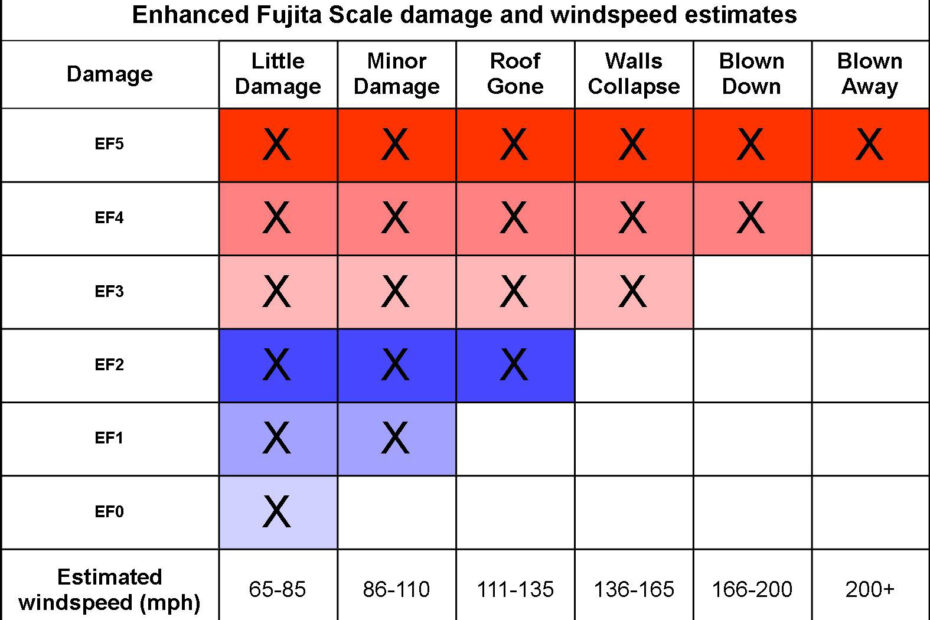Table of Contents
Decades of Research Change the Understanding of Storm Damage
Those in Tornado Alley are probably quite familiar with the Fujita Scale; it has also become the de facto standard for classifying tornado intensity in most regions of the world. Work on a system to gauge winds in these storms was initiated by University of Chicago professor Tetsuya “Ted” Fujita and Allen Pearson.
Fujita’s aim was to give damage surveyors a system from which they could devise the strength of winds based on damage to objects and structures. He debuted the scale in 1971, but it was devised without much research into the relationship between wind intensity and damage.
This was not the only problem: the basis of Fujita’s intensity estimations left a lot of room for subjectivity. Simply put, several researchers at the same scene may come up with several different estimations of intensity for the same tornado.
Researchers decided around 2000 that a new system was necessary, and began to pore through over three decades of research following Fujita’s initial work.
Research Results in Better Wind Estimates
The Enhanced Fujita Scale takes into account expert analysis on damage to various structures and objects based on different wind speeds. While not perfect, the estimated wind speeds likely come a lot closer to reality than those deduced from the older scale.
Assisting researchers in making more precise estimates are more “degrees of damage” to more types of structures and objects than the old Fujita Scale, which gives more data points for researchers to make determinations from.
“The EF Scale will provide more detailed guidelines that will allow the National Weather Service to more accurately rate tornadoes that strike in the United States,” National Weather Service director David Johnson said at the time of the scale’s initial unveiling in 2006.
NWS forecasters first began using the scale the following year.
Old Fujita and Enhanced Fujita are Similar, but Different
At the lower ends of either scale, the intensities are fairly similar. Both still preserve the original six-step scale, going from 0 to 5. But the changes in the wind speeds reflect the advancements in the understanding of tornadoes themselves and the damage they can incur. It should be mentioned that the levels of damage have not changed: merely the winds associated with them.
An F0 tornado had winds of 40 to 72mph; under the new scale, an EF0 has winds of 65 to 85mph. An F1 tornado was thought to have winds of 73 to 112mph, an EF1 has winds of 86 to 110mph. From here, the scales start to diverge.
F2 tornadoes had a fairly wide range of winds, extending from 113 to 157mph. This is a much smaller range in the new scale: an EF2 is thought to have winds of 111 to 135mph. The change is even more stark at the third level, as F3s were thought to have winds of 158 to 206mph, the new EF3 ranges from 136 to 165mph.
At the two highest levels, the wind speeds are almost completely different. F4s have winds of 207-260mph, but EF4s have brought that wind speed down to 166 to 200mph. At F5, its dramatic: those were thought to have winds of over 260mph, but now forecasters believe the strongest tornadoes usually have winds closer to 200mph and above.
Old Tornado Intensities Will Not Be Changed
The NWS has said it would not change the intensities of twisters that have been rated under the old system. It did say that in some cases, some of the stronger storms may have not been as intense as originally suspected, however.
